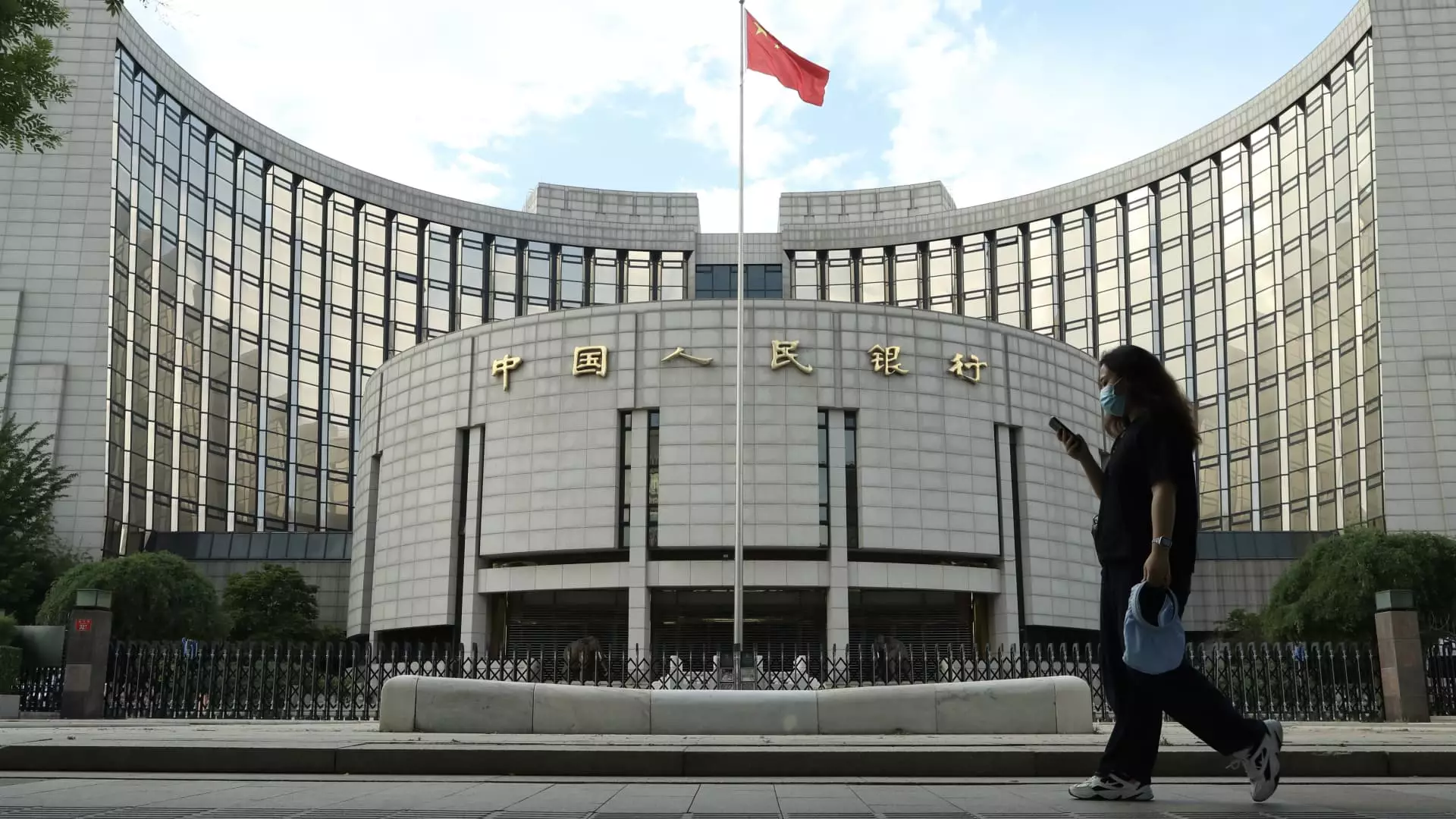On Monday, the People’s Bank of China (PBOC) made a notable adjustment to its economic strategy by lowering its benchmark lending rates. Specifically, the one-year Loan Prime Rate (LPR) was decreased by 25 basis points to 3.1%, while the five-year LPR was reduced to 3.6%. These rates are crucial as they directly influence corporate borrowing and household loans, as well as setting benchmarks for mortgage rates in the country. The move aligns with signals from PBOC Governor Pan Gongsheng, who had previously indicated a forthcoming reduction during a recent economic forum.
This action, however, does not exist in a vacuum. The decision to lower lending rates comes on the heels of a broader monetary policy shift, as evidenced by Pan’s suggestion that the reserve requirement ratio (RRR)—a vital measure of how much liquidity banks must hold—may also be adjusted downward in the coming months. Stating that the RRR could be lowered by 25 to 50 basis points by year-end, he indicated a proactive approach to enhancing financial liquidity in light of existing economic challenges.
This strategic recalibration of interest rates is primarily a response to flagging demand within China’s economy. While lowering benchmarks may seem like an effective tool to reinvigorate growth, experts caution against viewing it as a panacea. Shane Oliver, chief economist at AMP, has articulated that while the rate cuts do suggest a significant level of monetary stimulus, they are not a substitute for necessary fiscal interventions. The underlying problem, according to Oliver, is demand deficiency; merely cheapening borrowing costs does not address the core issues affecting consumption and investment by businesses.
Such perspectives reflect a consensus among economists that the real challenge facing China’s economy is not merely the cost of capital, but the urgency of bolstering consumer confidence amid a subdued economic backdrop. The domestic landscape is complicated further by a prolonged property crisis, which has had a cascading impact on consumer sentiment and spending patterns.
Another senior economist, Zhiwei Zhang of Pinpoint Asset Management, echoed this sentiment by noting that despite the recent cuts, China’s real interest rates remain comparatively high. He forecasts additional cuts in the forthcoming fiscal year as global economic conditions evolve, especially if the Federal Reserve reduces its own rates. This anticipated movement suggests that China may be positioning itself to strategically align with shifts in the global economic environment, a tactic that underscores the interconnectedness of national economies.
In addition to the recent lending rate adjustments, the PBOC has also acted decisively by revising the reserve requirement ratio last month and implementing various supportive measures aimed at reinforcing the world’s second-largest economy. Illicit in these actions is a reflection of the PBOC’s ongoing battle against economic stagnation.
While the decision to cut lending rates and amend the reserve requirement ratio may provide some temporary relief for financial institutions and perhaps encourage limited spending, it is clear that more expansive fiscal measures are essential for a thorough economic recovery in China. This is a narrative that has been echoed not only by economists but also by policymakers who recognize the necessity of a multi-faceted approach.
Recent reports may paint an optimistic picture, citing better-than-expected GDP growth and resilience in retail sales and industrial output. However, these figures may not be indicative of a robust recovery but rather symptomatic of short-term fluctuations in an otherwise fragile economic landscape. The road to sustainable economic revitalization in China hinges not just on lower borrowing costs, but also on fostering an environment that stimulates consumer confidence and demand.
While the PBOC’s rate cuts signify an essential step in the right direction, they are merely an initial response to far deeper and more systemic economic challenges. Comprehensive fiscal strategies, focused on nurturing demand and stabilizing the property market, will ultimately be requisite for long-term recovery.


Leave a Reply